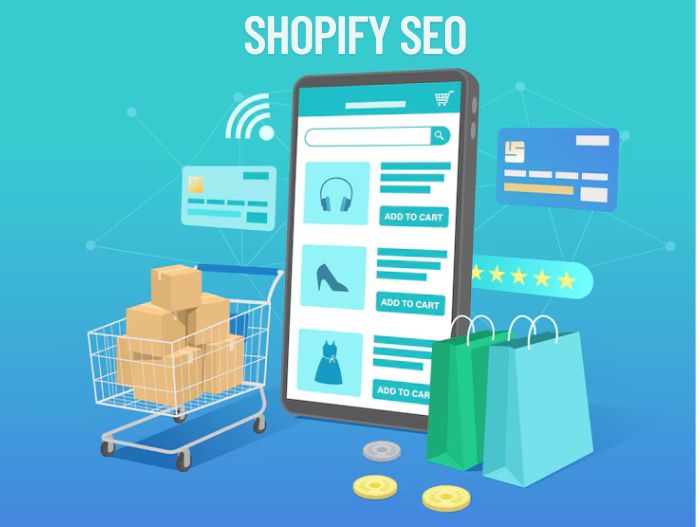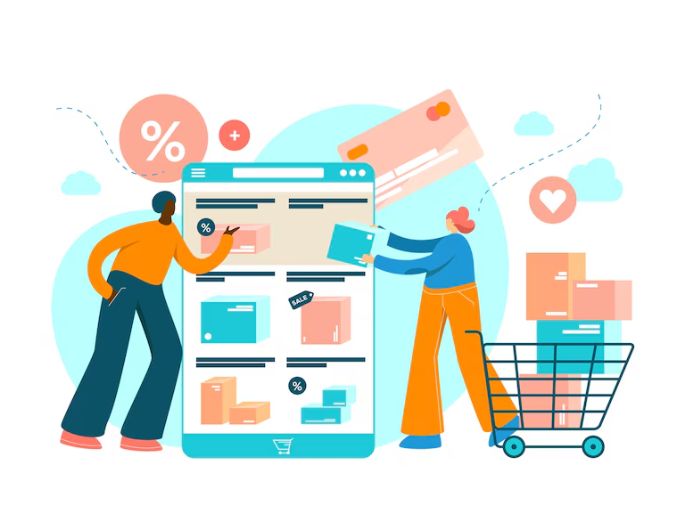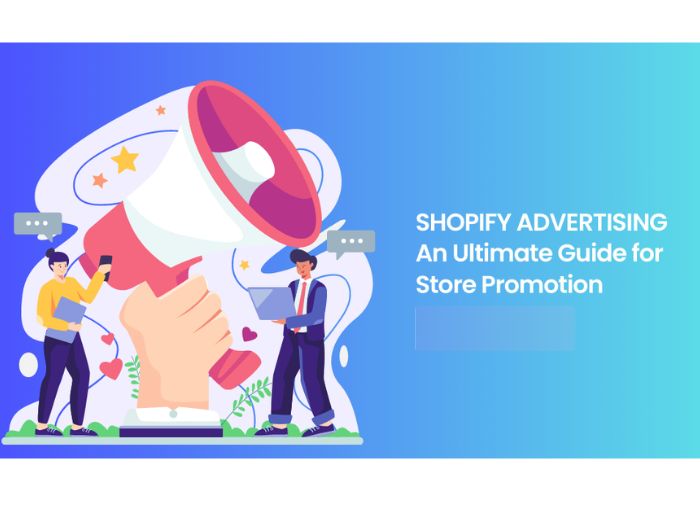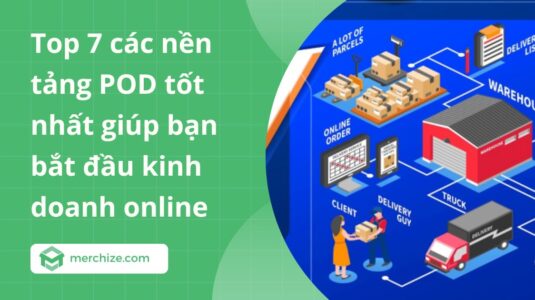The e-commerce industry is projected to surpass $4.3 trillion globally by 2025 (Statista), highlighting the immense potential in the coming years. Among this growth, Shopify stands out as a leading e-commerce platform, with 4 million active online stores contributing significantly to this expansion. However, the intense competition among merchants has made it more challenging to attract customers. So, how can you drive traffic to your Shopify store in this competitive environment?
This article, provided by Merchize, will offer the top strategies that any Shopify store can implement with a focus on low budget, while achieving consistent and high web traffic growth.
Tips to drive traffic to your Shopify store
Increasing traffic to your Shopify store requires store owners to implement appropriate strategies, which may be either paid or free, depending on the goals of each stage. By using the right methods, you can drive more traffic to your store and create opportunities to convert visitors into potential customers.
Follow these steps to attract traffic to your Shopify store:
Optimize Your Shopify Store for SEO
One of the most effective and cost-free strategies for driving organic traffic to your Shopify store is Search Engine Optimization (SEO). It’s a priority for almost every store aiming to increase visibility and attract more visitors.
On-page optimization
- Title: The title tag is the first thing users see on Google (Shopify SEO), directly influencing whether they click on your Shopify store. To increase your click-through rate (CTR) and help search engines understand your page’s content, your title should align with search intent, be between 60-70 characters, naturally include your main keyword, and be refined using data like Google Search Console
- Meta Descriptions: A well-written meta description can indirectly improve your store’s click-through rate. Each page should have unique descriptions that address the specific needs of that page while covering the value it provides. An engaging meta description should be within 160 characters, contain relevant keywords, and promise real value to the reader. For example, using the keyword “what to sell on Shopify," an enticing description might be: “Discover what to sell on Shopify in 2025. Learn about trending niches and top-selling products to boost your online store’s success”
- Long-tail Keywords: Use specific phrases that match what shoppers are searching for, like “organic cotton baby romper” instead of just “baby clothes.” To gather this data, you can use tools like Google Trends, Ahrefs, or SEMrush to identify the exact phrases users are interested in
- Internal Links: When users are engaged with your content, guide them to other valuable pages, such as your top-selling product pages, as they might be curious and interested in further exploration. To determine how to link internally, group related content together and provide value to encourage clicks. For example, they might be interested in “how to find products to sell on Shopify" and “how to get more sales on Shopify"
Shopify SEO
Off-page & broader SEO strategies
In addition to on-page SEO, an extended SEO strategy will help your store reach a broader audience:
- Backlinks: Acquiring backlinks from partners can significantly boost your Shopify store’s credibility, especially from bloggers, influencers in your niche, or product review sites, and suppliers
- Guest Posts: If your Shopify store is featured on authoritative e-commerce or industry blogs, it will undoubtedly increase the chances of gaining positive reviews. This presents a great opportunity to attract more traffic to your store
Enhance User Experience (UX)
User experience (UX) directly impacts the behavior of users visiting your Shopify store. Keeping visitors engaged longer on your site signals to search engines that your store provides value, resulting in higher visibility in search results. To enhance user experience, you should focus on the following tasks:
- Improve Page Speed: A website that responds quickly to user actions will always leave a better impression than one that makes users wait to find the information they need
- Optimize Images: Lightweight, high-quality images (JPG or Webp) will significantly reduce page load times, especially in image-heavy categories, while still supporting the decision-making process for customers
- Ensure Mobile Responsiveness: Mobile search traffic has surpassed that from laptops and tablets. Ignoring this potential source of traffic would be a missed opportunity
- Simplify Navigation and Checkout: Intuitive navigation and a seamless checkout process reduce cart abandonment and improve user satisfaction
- Add Search Functionality: Implement a prominent search bar with filters to help users quickly find products they’re looking for
Leverage Content Marketing
Content is the key medium for Shopify stores to engage with their customers. Regardless of the strategy you implement, content plays a crucial role in determining whether that strategy will succeed.
- Blog: For new websites or those lacking strong brand authority, writing blogs based on keywords that users are searching for, combined with product SEO, is the most effective and cost-efficient method to drive organic traffic
- Video: Video content is trending and highly engaging for users. If your store can transform written content into video, you’ll have a better chance of capturing more attention, especially with short videos showcasing actual products. These types of videos work particularly well on social platforms
- Podcast: Many brands are now leveraging podcasts to connect with customers through real-life stories and experiences. Customers often find solutions to their problems after listening to podcasts, leaving a lasting impression of your Shopify store
Tap Into Social Media Marketing
Social media is a dynamic channel where users engage differently compared to websites or other eCommerce platforms. It’s a space where users actively share what they love. This unique characteristic makes social media an essential part of any brand’s customer acquisition strategy today.
Get traffic to your Shopify store via social media
Engage on Instagram with reels
Instagram is where people share authentic moments from their daily lives. By turning your account into a storytelling channel around your products, you’re not just posting content; you’re creating a connection. When viewers see themselves in the story, they’ll want to learn more, and that’s when your Shopify store gains visibility. Revamp your Instagram channel with these steps:
- Create authentic content: Showcase active products, like a fashion store creating Reels to feature your outfits
- Use trending sounds and hashtags: Incorporate trending sounds and hashtags such as #ShopifyStore or #Fashion to boost discoverability
- Link to Shopify: Use Shopify’s Instagram integration to tag products in your Reels, directing users to your store
Create viral TikTok product videos
TikTok is a place where new trends constantly emerge and spread, attracting millions of participants. If you know how to leverage the power of viral product videos, your Shopify store can quickly gain visibility thanks to the attention TikTok brings.
Start with these steps to make TikTok a tool for driving traffic to your Shopify store:
- Leverage trends: Create videos based on popular challenges, like “earn money online with POD” if your product is print on demand
- Keep videos short and authentic: Shoot 15-30 second videos with clear images, text overlay, and finish with a call to action
- Optimize with hashtags: Use trending hashtags like #TikTokShop and specialized tags like #PODDesigns to reach the right audience
Use Pinterest for shoppable pins
Pinterest is the ideal image search tool for driving traffic through shoppable pins. You can design high-quality pins for products like home decor and link them directly to the product page on Shopify.
To optimize search, use keywords like “custom t-shirts for summer” in the title and pin description to align with user searches. Additionally, organizing your boards by themes, such as “Personalized decor ideas,” not only attracts a specific audience but also encourages users to save them. These pins convert Pinterest users into ready-to-buy customers on Shopify.
Run Paid Advertising Campaigns
Besides the free traffic methods for your Shopify store outlined above by Merchize, paid advertising campaigns will help you quickly reach this traffic source.
how to drive traffic to your Shopify store with ads
Google Search and Shopping Ads
Google knows how to satisfy its users, and its Google Search Ads and Shopping Ads tools help Shopify stores target the right audience, who are actively searching to make a purchase.
- Google Search Ads: You can present your products to customers at the precise moment they are looking for what you offer through keyword-based search ad campaigns
- Shopping Ads: This tool displays product images, prices, and standout reviews directly in search results, making your products more noticeable and easier to convert
Keep in mind that to run ads effectively, you should test campaigns and then optimize performance using tools like Google Analytics and Shopify’s dashboard to achieve the best bids
Facebook and Instagram Ads
Facebook and Instagram ads are an effective way to reach a large audience of potential customers for your Shopify store. With Meta’s ad manager, you can precisely target users based on demographics such as age, gender, location, and interests like “customized t-shirts” or “unique gifts.”
Additionally, you can take advantage of dynamic ads to connect with your Shopify product catalog, displaying items with high demand. To optimize costs, start by running small-budget ads (around $15/day, depending on the ad type), and if the campaign proves successful, consider scaling it up.
TikTok Ads for younger audiences
TikTok is a prominent trend favored by Gen Z for both entertainment and shopping needs. Therefore, TikTok ads can be highly effective if leveraged correctly.
To run TikTok ads, you will need:
- A TikTok Business Account linked to your Shopify store
- A TikTok Ads Manager account to create and manage campaigns
- Short, engaging videos in vertical format (9:16) that are either entertaining or inspiring
The key to TikTok ads is to “blend in" with how TikTok users consume content. For example, if you’re selling personalized name t-shirts for couples, create content like “Gift your boyfriend a t-shirt with both our names, check out his reaction!” This type of viral and emotionally resonant content will help you reach a younger audience, who are more likely to share and impulsively shop, thereby boosting traffic to your Shopify store in a natural yet effective way.
Implement Email Marketing
Email marketing is a strategy you can use to engage groups of people who have previously shown interest in your Shopify store but have not made a purchase. To run an effective email marketing campaign, you will need:
- A quality email list
- Engaging and personalized email content
- A well-timed email schedule
- A clear call to action
- An email marketing tool
Collaborate With Businesses
In addition to the methods mentioned above, you can leverage Shopify’s community to drive traffic to your Shopify store. Shopify has its own community for users, and by participating in this ecosystem, you gain the opportunity to collaborate with businesses in the same field.
This is an excellent way to grow traffic and expand your customer base. By joining the Shopify community, you can connect with businesses targeting the same audience, creating opportunities for cross-collaboration.
Analyze and Refine Strategies
No matter which strategy you implement to increase traffic to your Shopify store, it is essential to track, analyze, and optimize at each stage for it to be effective.
Shopify provides tools like Shopify Analytics to help you monitor your store data, or you can use Google Analytics when running campaigns on Google search tools.
Some key metrics and data you should focus on to ensure the success of your strategy include:
- Traffic volume (Organic, Paid, Referral, Social)
- Conversion rate
- Bounce rate
- Average time on page
- Pages viewed
- Social media engagement
- On-page actions
How to drive traffic to Shopify store FAQs
How do I drive free traffic to Shopify?
You can increase free traffic to your Shopify store by optimizing SEO, creating engaging blog content, joining social media communities (Facebook, Instagram, Reddit), and building quality backlinks.
Which paid platforms work best?
The most effective paid advertising platforms for Shopify include Google Ads, Facebook/Instagram Ads, TikTok Ads, and Pinterest Ads. Google Search/Shopping Ads help reach customers with a high purchase intent, while Facebook/Instagram Ads broaden your reach to a larger audience. TikTok Ads attract younger users, while Pinterest Ads target customers who are ready to buy. Depending on your goals and audience, you can choose the platform that best suits your needs to maximize results.
Which Shopify apps boost traffic?
Some Shopify apps that help increase traffic include SEO Booster, Plug in SEO, Omnisend (email marketing), and Referral Candy (referral marketing).








